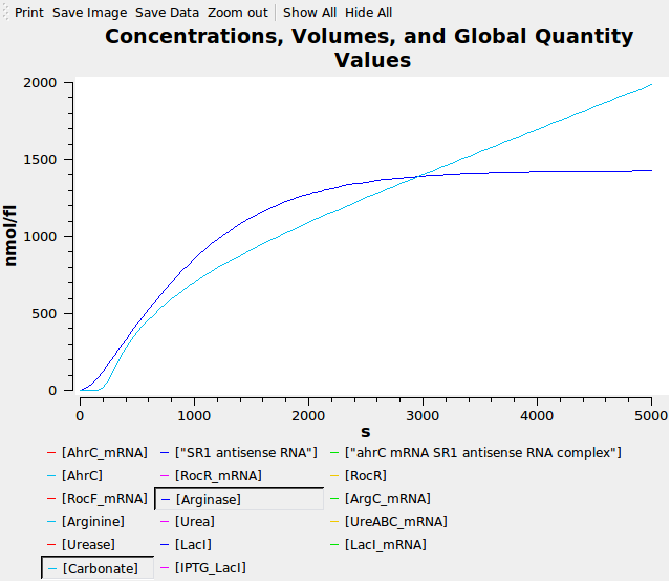Team:Newcastle/Urease
From 2010.igem.org

| |||||||||||||
| |||||||||||||
Contents |
Calcium carbonate precipitation via urease expression
Bacillus subtilis produce urease, which catalyses the hydrolysis of urea into ammonium and carbonate (CO32-). Since the cell walls of the bacteria are negatively charged, they draw cations from the environment, including Ca2+, to deposit on their cell surface. The Ca2+ ions subsequently react with the CO32- ions, leading to the precipitation of CaCO3 at the cell surface.
In order for B. subtilis to fill up cracks in concrete, enhanced production of calcium carbonate must be achieved: we need to up-regulate urease production.
Previous experiments involving up-regulating ureA, ureB and ureC in B. subtilis have not lead to an increase in urease production. This could be due to yet unidentified genes that are involved in the process. Therefore, we are looking at another strategy, increasing urea hydrolysis indirectly by increasing arginine and arginase production. Arginase breaks down arginine to urea and ornithine, leading to an increase of urea inside the cell. We believe that in turn the urea itself will increase urease production. By targeting this pathway we will hopefully be able to activate additional unknown pathways and enzymes that are involved in urease production.
We plan to produce two BioBricks, SR1, which will enhance arginine production, and rocF, which will enhance arginase production. These will be combined into a Urease BioBrick.
Biochemical network
diagram..
Computational model
...
Graphs
Cloning strategy
- Cloning strategy for SR1
- Cloning strategy for rocF
- Cloning strategy for combined Urease BioBrick
Characterisation
....
Biosynthesis of Active Bacillus subtilis Urease in the Absence of Known Urease Accessory Proteins JOURNAL OF BACTERIOLOGY, Oct. 2005, p. 7150–7154 Jong Kyong Kim, Scott B. Mulrooney, and Robert P. Hausinger
Cement and Concrete Research 40 (2010) 157–166
Use of bacteria to repair cracks in concrete Kim Van Tittelboom a, Nele De Belie a,⁎, Willem De Muynck a,b, Willy Verstraete b
Expression of the rocDEF Operon Involved in Arginine Catabolism in Bacillus subtilis
Rozenn Gardan, Georges Rapoport and Michel Debarbouille J. Mol. Biol. (1995) 249, 843–856
Expression of the Bacillus subtilis ureABC Operon Is Controlled
by Multiple Regulatory Factors Including CodY,
GlnR, TnrA, and Spo0H
 
|
 "
"
